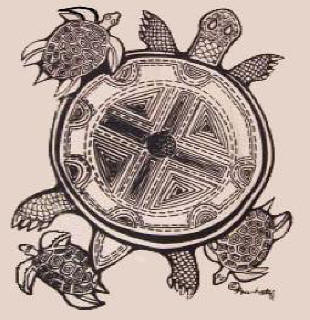 |
LITR 4231 Early American
Literature Research Posts 2014 (research post assignment) Research Post 1 |
 |
Elizabeth Sorensen
Cynthia Ann Parker
The story of Cynthia Ann Parker was one of the most famous captivity stories in
Texas history. Since she was captured so young, she never became literate, so
her story was written and told by others. Parker was born sometime between 1824
and 1825 in Crawford County, Illinois. When she was around nine years old, the
Parker family moved to Central Texas and built Fort Parker near the Navasota
River. During a raid, Comanche Indians captured Cynthia Ann and four other
settlers from the fort who were all divided among varying tribes. Often times,
captured settlers became slaves of the Indian captors; however, this was not the
case with Cynthia. She was adopted by a Comanche family, named Naduah, and
became thoroughly Comanche.
Parker eventually married a Comanche warrior named Peta Nocona who later became
chief of the Comanche tribe they belonged to. By all accounts, the two were
happily married. Peta was so pleased with Parker that he refused to take any
other wives, which was a common practice among Indian chiefs, and remained
monogamous with Cynthia Ann. The couple had three children, two boys and a girl,
named Quanah Parker, Pecos, and Topsannah.
White settlers frequently traded with various Indian tribes. A trader
name Williams reported seeing a girl with blue eyes camped with the Comanche
Indians in Northern Texas near the Canadian River. Williams offered to trade for
her and also attempted to give ransom money for her, but the Comanche elders
refused to release her. It is not known for sure whether or not she wanted to
leave her new way of life at this time; however, Williams was allowed to speak
to her, but she stared at the ground and refused to answer his questions.
Since her husband was a warrior, he was frequently engaged in warfare
with Anglo settlers. He eventually attracted the attention of the Texas Rangers.
In December 1860, a Ranger force attacked Noconaís village and captured several
Indians including Cynthia and her daughter. She was identified by Col. Isaac
Parker as his niece. She was forced against her will to go with her uncle to
live with him in Birdville. Cynthia made several unsuccessful attempts to flee
the Anglo community she was forced to live in to go back to her Comanche village
where her husband and two sons were.
According to Quanah Parker, Cynthiaís
husband died of grief over the loss of his wife and daughter four years after
she was captured. Her other son Pecos had died during his youth
from smallpox. In 1863, Parkerís only connection to her old life, her daughter,
died of influenza. Alone and depressed, Cynthia Ann Parker died of self-imposed
starvation a few years later at her sisterís home in East Texas.
After her death, she was buried in Fosterville Cemetery in Anderson County. In
1910, her son Quanah moved her body to the Post Oak Mission Cemetery near Cache,
Oklahoma. In 1957 her body and that of Quanah's were reinterred in the Fort Sill
Post Cemetery at Lawton, Oklahoma.
Even though there was no actual captivity narrative describing Cynthia Ann
Parker, we are still left with plenty of information that gave us most famous
captivity story in Texas history. She is a fascinating character among our
history not only for her capture but for her bravery and determination depicted
through second-hand accounts of her life.
Sources
http://www.tshaonline.org/handbook/online/articles/fpa18
http://www.history.com/this-day-in-history/cynthia-ann-parker-is-kidnapped
http://www.rootsweb.ancestry.com/~txnavarr/biographies/p/parker_cynthia_ann.htm
|
|
|
|


